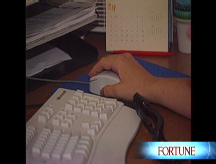Housing rescue on the rise; so are foreclosures
The foreclosure prevention coalition Hope Now arranged workouts for 183,000 at-risk borrowers last month. Still, more families than ever are losing their homes.
NEW YORK (CNNMoney.com) -- Hope Now helped 183,000 at-risk borrowers stay in their homes during the month of April, according to numbers released by the coalition on Friday.
The alliance of mortgage lenders, servicers, investors and community advocacy groups also said it has arranged a total of nearly 1.6 million loan workouts since the program began in July, 2007.
The April figure represents 23,000 more workouts than were completed in March, or a 7.6% increase, and is the highest monthly total since Hope Now got started.
"These numbers clearly demonstrate that Hope Now is succeeding at helping homeowners avoid foreclosure and stay in their homes," said the organization's executive director, Faith Schwartz.
But foreclosure filings are accelerating also. RealtyTrac, an online marketer of foreclosed properties, recently reported that 243,353 households received a foreclosure filing in April, up 65% from that month last year.
And a total of 80,926 families lost their homes to foreclosure in April, according to Hope Now, up 12% from 72,024 in March. That puts the country on pace to see more than a million families lose their homes this year.
Most of the workouts that Hope Now did in April - 105,000 - were repayment plans in which delinquent borrowers were simply given extra time to make up missed payments.
But the proportion of actual mortgage modifications, which permanently lower a struggling homeowner's monthly payments by cutting a loan's balance or interest rate, is on the rise. In April, about 77,000 of the total workouts, or 42%, were modifications. That's up from March, when 36% of the Hope Now workouts were modifications.
Modifications are usually considered more effective, long-term solutions for delinquent borrowers than repayment plans.
"It's helpful that these folks are getting modifications," said Jared Bernstein an economist with the Economic Policy Institute. "There are, however, lots of people in trouble who need more help than Hope Now is giving them."
Many homeowners who face severe problems that require more complicated workouts are still not getting enough help, according to Bernstein, which is one reason why foreclosure rates continue to rise.
"I still regard this as low-hanging fruit," he added, "but it is helping a non-trivial number of people."
Meanwhile, the housing markets continue to deteriorate. On Monday Standard & Poor's/Case-Shiller said its national home price index fell 14.1% in the first quarter compared with a year earlier, to its lowest level since its began tracking prices in 1988.
Falling home prices put even more pressure on homeowners who can't make their payments, by making it difficult for them to refinance or to sell at a price that will enable them to pay off their mortgage. Areas with declining home values, like parts of California and Florida, are seeing the largest volume of homes go into foreclosure.
But no one wants that to happen, according to Hope Now's Schwartz.
"Foreclosure benefits no one: the borrower, community, lender and investor all lose," she said. ![]()



